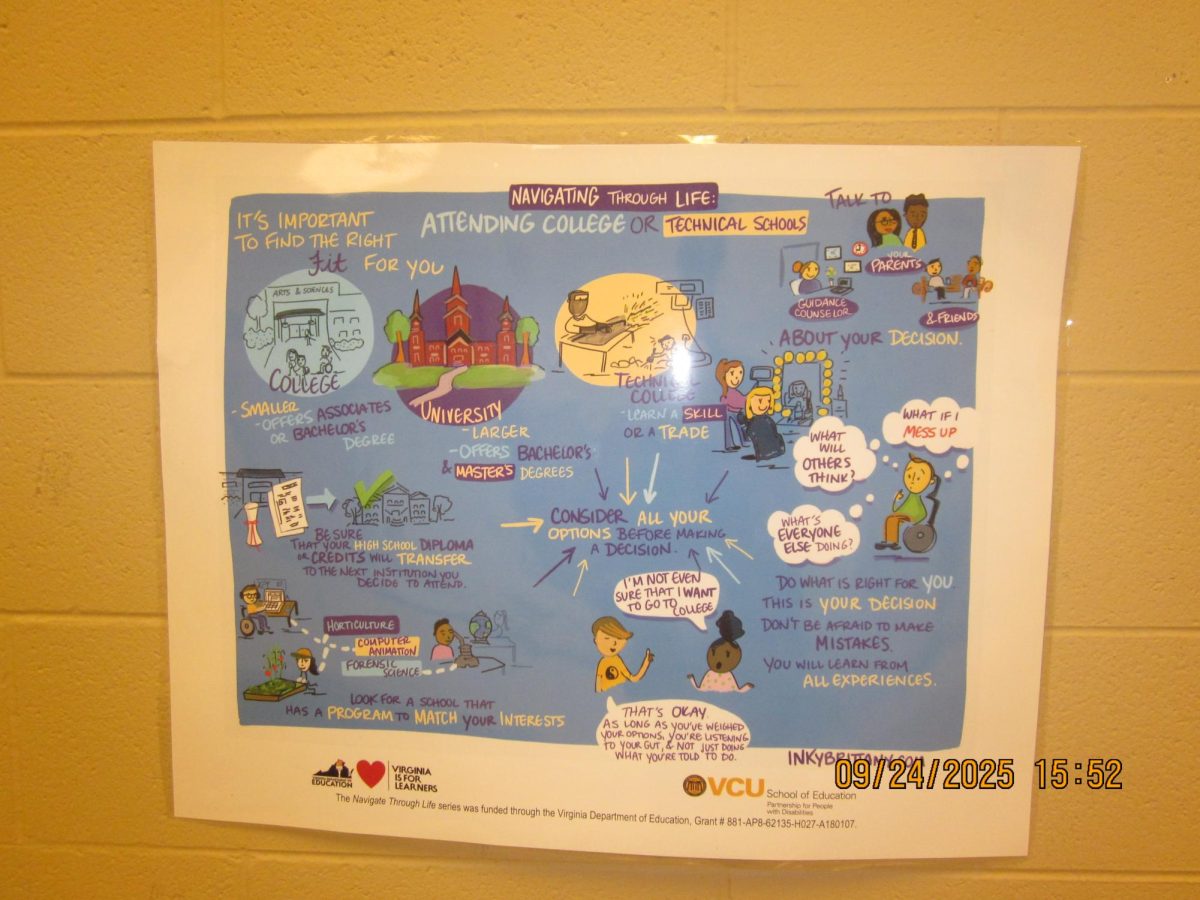Cafeterias, once fertile ground for unappetizing jokes, are quietly undergoing a transformation. Gone are the days of mystery meat and soggy fries; today’s school lunches strive for a healthy, appealing and well-prepared presentation. However, offering nerely 1,750 students lunch, five days a week, is no simple undertaking. This begs the question: how well does the reality of “the school cafeteria” system align with the idea of a “good lunch”?
Robin Cox stands in a busy kitchen surrounded by her team busy preparing for the afternoon lunch service. Cox is the manager of the Clover Hill High School cafeteria. She orders food, oversees its preparation, inspects quality and manages the daily logistics of running a cafeteria. And while she has noticed an improvement in food quality over the years, she admits there are limitations and barriers.
“I think the food quality is better than it used to be,” said Cox. “We are going back to actual recipes, but we are so short staffed, it just makes things very hard.”
The history of public school lunches dates back to the early 20th century. According to the South Carolina Department of Education, major cities such as Philadelphia, Boston, New York, Cleveland, Cincinnati and Milwaukee were among the first to provide meals to their students.
In 1946, Congress would pass the National School Lunch Act to ensure students were provided with nutritious lunches while expanding nonprofit school lunch programs thought the country. The National School Lunch Act was the first of many laws passed by Congress to help promote healthy and available school lunch programs. The most recent law, Hunger Free Kids Act of 2010, solidified nutritional standards for school lunches while introducing breakfast programs.
In 2010, First Lady Michelle Obama carried out the Healthy, Hunger-Free Kids Act. The Healthy, Hunger-Free Kids Act truly did change nutrition for the better, making it a requirement that schools serve more fruits, vegetables, whole grains and low-fat milk.
History teacher Jeffery Milner reminisces about the bygone days of less health conscious high school lunches.
“Back then they had something every day like french fries, and the main course would sort of change,” said Milner.”
Behind the scenes, there is a full system to ensure students are served food in line with government standards.
“We follow a three week program, school dietitian, Sarah Church changes it about every quarter,” said Cox. “That is the plan they normally stick to, then we throw in the holiday things for Thanksgiving, Christmas and Easter.”

Group of students enjoying their lunch. (Vanessa Wigfall)“All our food is planned by a dietician,” said Cox. “We put our orders in two weeks in advance.”
There are sometimes issues in the system that lead to availability.
“There are a lot of times we don’t have the food on the menu,” said Cox. “I’m sure students notice that.”
To compete with government provided menus, corporations have recently gotten into the world of school lunches. Conglomerate Kraft Heinz introduced a lunch program for the 2023-2024 school year which focused on their “Lunchables” product as a food option. These highly processed premade meals did fit federal regulations.
Clover Hill High School is supported by the National School Lunch Program, so everything comes from government owned companies.
“We have delivery drivers, right now it comes from the United States Department of Agriculture, which is a Government owned company,” Cox said. “We have milk that comes in, we have produce that comes in, which comes from Caneys or Favors (Favors is Government), they are both dairy and produce companies. Pepsi is where you get your Gatorade and apple juices, stuff like that, and our bread comes from Flowers.”
The U.S. Department of Agriculture (USDA) defines a “full meal” for students based solely on nutritional standards met by the school, raising concerns about how these guidelines align with students’ actual eating habits.
The USDA’s “Nutrition Standards for School Meals” states that “school meals are required to meet specific nutrition standards to operate the school meals programs. The standards align school meals with the latest nutrition science and the real-world circumstances of America’s schools.”
However, these standards, which dictate quantities like 2.5-5 cups of fruit per week, 3.75-5 cups of vegetables, 8-12 ounces of meat, and 5 cups of milk, may not reflect the reality of student lunchtimes.
Despite the guidelines, many students discard food or fail to take all the required items, making it difficult to consume a complete meal as defined by the USDA. Additionally, Virginia’s free meal program requires students to take a fruit and vegetable to qualify, adding another layer of complexity. Even when students try to eat within the allotted time, lunch periods have grown significantly shorter in recent years, leaving them with limited time to finish their meals.
This mismatch between USDA standards and student behavior raises questions about the effectiveness of current school lunch programs in meeting students’ nutritional needs. Further investigation is needed to understand how these programs can be adjusted to better serve the realities of student lunchtimes and ensure all students have access to healthy and satisfying meals.










